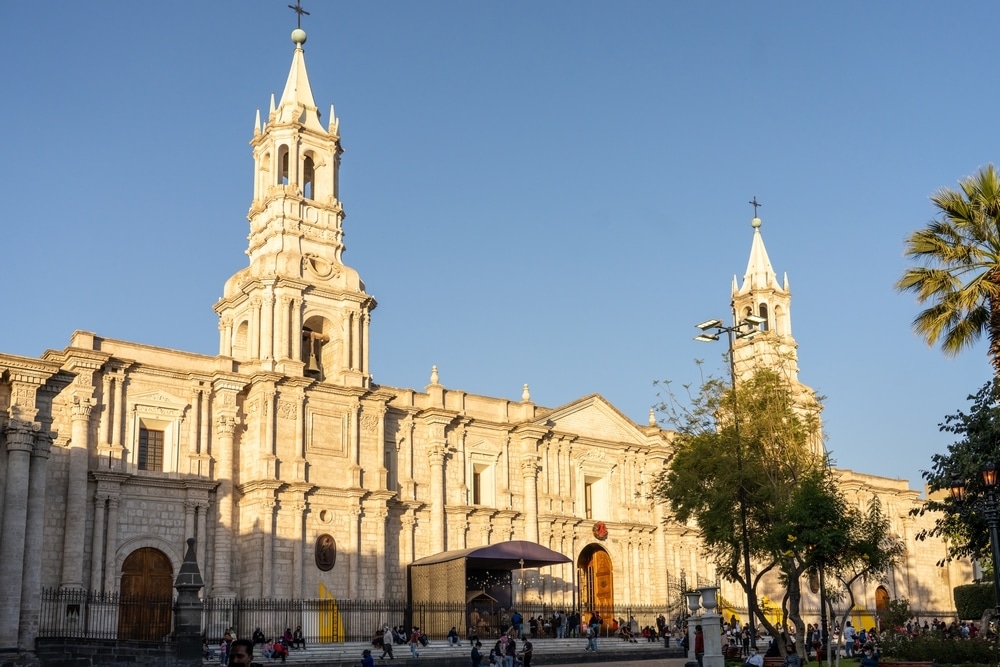
The Museum of the Cathedral is a central attraction at Plaza de Armas Square in the heart of Arequipa, which Peruvians know as the White City.
By Karin Leperi
It’s not often you arrive in town and your first thoughts are, “Get thee to a nunnery.” Arequipa, Peru’s second largest city, is one of those unexpected exceptions where that saying holds true. It’s a fascinating place where culture, history, religion, architecture, and stories from the past come together to define the present day.
Arequipa’s Santa Catalina Monastery is an amazing visit into the past when well-heeled families would send their second daughter to the nunnery to guarantee the family’s lot in the afterlife. (First daughters married for money, second daughters married the church, and third daughters had a bit more choice but may have lacked a dowry).
Search for Salvation
Salvation wasn’t cheap! A daughter’s entry cost upper-class Spanish families around $150,000 in todays money. That didn’t include the costs of bringing a servant who was responsible for cooking and cleaning for the resident nun. Some nuns even had slaves. Started in 1580, almost 40 years after the founding of Arequipa, the monastery was built with white stone from the now dormant Chachani volcano outside Arequipa, creating a beautiful retreat and a city within a city. The colonial architecture includes plazas, fountains, courtyards, and cobblestone streets against a background of vivid burnt orange and cobalt blue walls and buildings. At its peak, the walled Monastery of Santa Catalina de Siena housed around 450 cloistered nuns, servants and slaves.
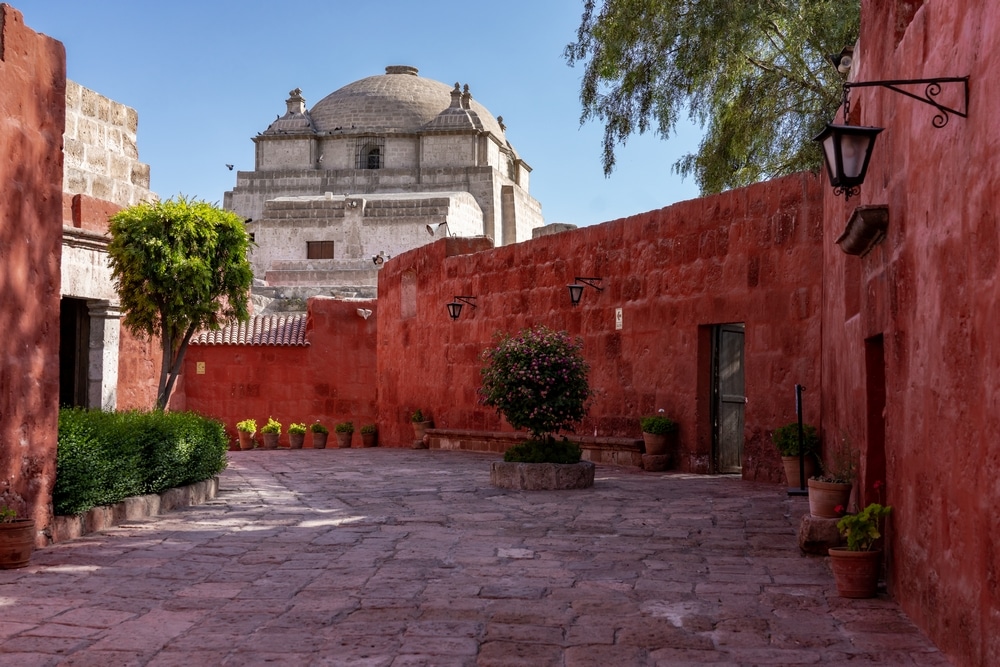
At one point the walled Monastery of Santa Catalina de Siena housed around 450 Catholic sisters and their servants. Today it is home to just 21 nuns who rarely are seen on Grenada Street. Streets inside the walls are named after Spanish cities 16th century nuns thought they resembled.
While the monastery was once a walled city-within-a-city where nuns spent their lives in prayer and solitude behind a walled barricade, nowadays it is the number one attraction in Arequipa. When you enter the gates into the adobe brick walled community, it is like going back in time 400 years.
Peruvian Viceroyal architecture
Because Arequipa is situated in an active volcanic region and earthquake zone, separate areas of the structure were built during different centuries, giving way to a collage of local and colonial styles. While the convent is one of the most important examples of Peruvian Viceroyal architecture, it also represents a fusion of pueblo, indigenous, colonial and even Moorish influences.
As you tour the expansive monastery grounds, you’ll walk on narrow bricked and cobble-stone streets reminiscent of Old Europe. Arched colonnades lead to courtyards adorned with fountains, lemon trees, and potted flowers. Inside the quaint buildings you’ll discover private rooms that belonged to the nuns. Those occupied by the most wealthy would have had bigger beds with lace sheets, English carpets, silk curtains, fine bone china, silverware, damask tablecloths, and even kitchens with two ovens. Each initiate was permitted to bring 21 objects to make life more comfortable.
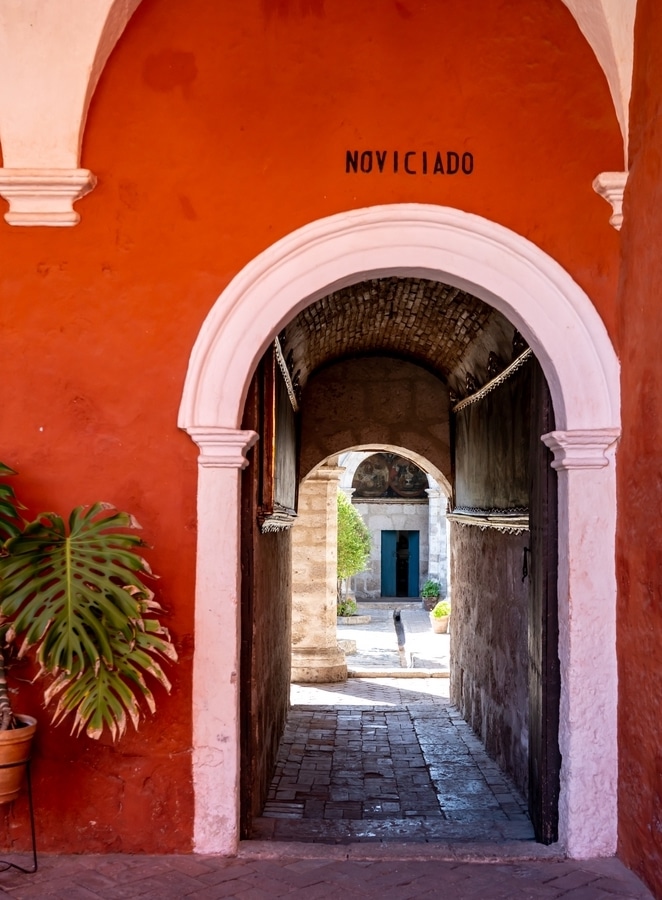
The Noviciado cloister was reserved for novice nuns who were committed to a vow of silence and life of work and prayer. They lived here for four years before choosing to take their final vows of religious service or leave.
Mirror to the Past
The monastery is a mirror to the past. As you tour the grounds, it is hard to escape the haunting feeling of a past stratified by class. The drudgery of everyday tasks was left to the servants and slaves. Those with money had more help. A solitary life of prayer and seclusion probably had little appeal to the novices, who were not allowed to be around men. When a man entered the premises, a bell would ring to signal the sisters to hide the noviates in their cellars.
There are stories about some of the wayward deeds of the sisters including lavish living and entertainment with live music at dinner. Even more deviant are the hushed stories of pregnant nuns who supposedly walled up the corpses of unwanted babies to protect their indiscretions. But for all the muted talk there is no historical evidence to support the more salacious deeds.
What is true however, is that in the mid-18oo’s, rumors circulated within the Vatican about all the money the daughters of aristocrats were spending as well as their many lively conversations. Neither were reflective of a life of penitence and prayer. Some likened the monastery more to a social club of wealthy aristocratic daughters enjoying the fineries of life rather than a religious convent.
Consequently, Pope Pius IX decided to send a strict Dominican nun in 1871 to investigate the rumors and initiate reform. Rich nuns and their dowries were sent back to Europe. Servants were given the choice to leave or remain as nuns. Stripped of their finery, the private bedrooms were closed and replaced by stark dormitories more befitting a religious life of poverty.
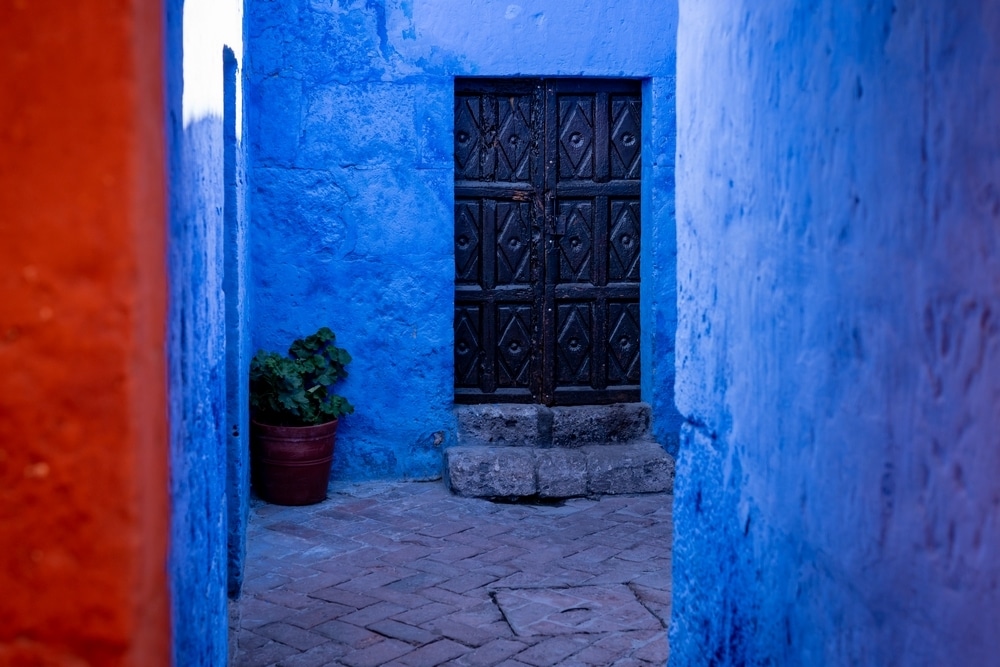
Santa Catalina Monastery is known for its vivid orange and blue walls.
Hard times in the Modern Age
By the late 1800’s, without the substantial dowries of wealthy nuns supporting a walled city covering an entire city block, the monastery fell on hard times. The complex disintegrated into a state of disrepair due to lack of funds. Stories abound of the remaining nuns doing much of the maintenance. By the 1970’s, civil code required the nuns to install electricity and running water to meet the demands of modern life. Unable to comply, the remaining nuns elected to open the majority of the monastery for public viewing. For the first time, an inquisitive public was able to glimpse life behind the cloistered walls. Today, it has become one of Arequipa’s prime tourist attractions.
Today, entrance fees – around $10 with an English-language tour – continue to pay the monastery’s substantial maintenance costs. The remaining 21 nuns live in a small complex within the monastery, off-limits to visitors and with no WiFi.
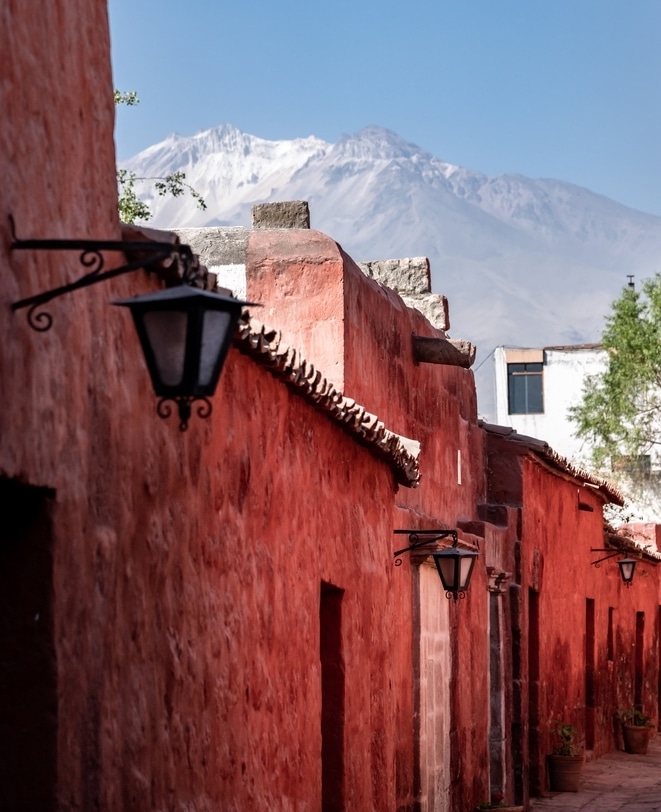
Under the Volcano. Chachani Volcano looms over Arequipa, Peru and Calle Cordoba which runs through the time capsule that is Santa Catalina Monastery.
If You Go
Peru is an incredibly diverse country so if you plan a trip to Arequipa try to also see other cities that are easily reached from the Lima airport. A completely different experience is available in Iquitos, the gateway to the Peruvian Amazon.
For a more other worldly experience fly to the desert of southern Peru to view the Nazca Lines, a series of mysterious 1,500-year old pictographs etched into the floor of the Nazca Valley. They depict a monkey, spider and hummingbird plus a haunting figure many believe to be the likeness of a UFO astronaut.
A writer-photographer based in Albuquerque, New Mexico, Karin Leperi focuses on unique people and places around the world.

